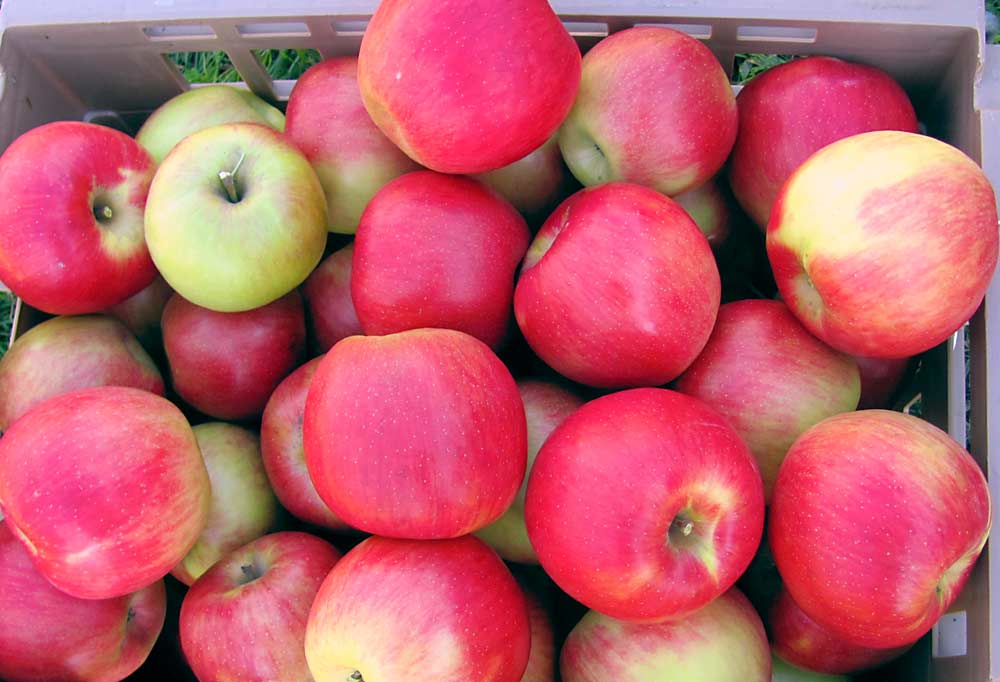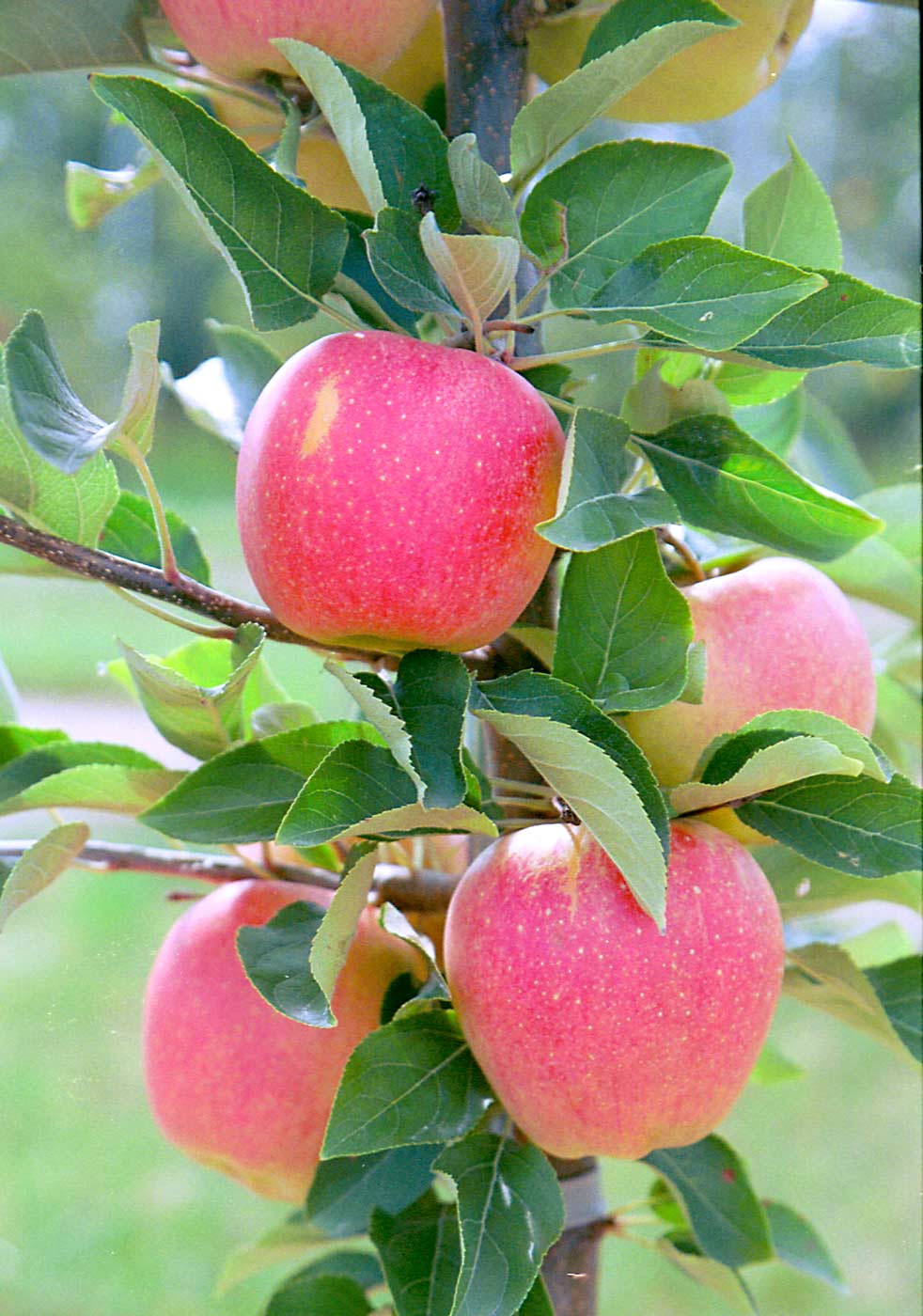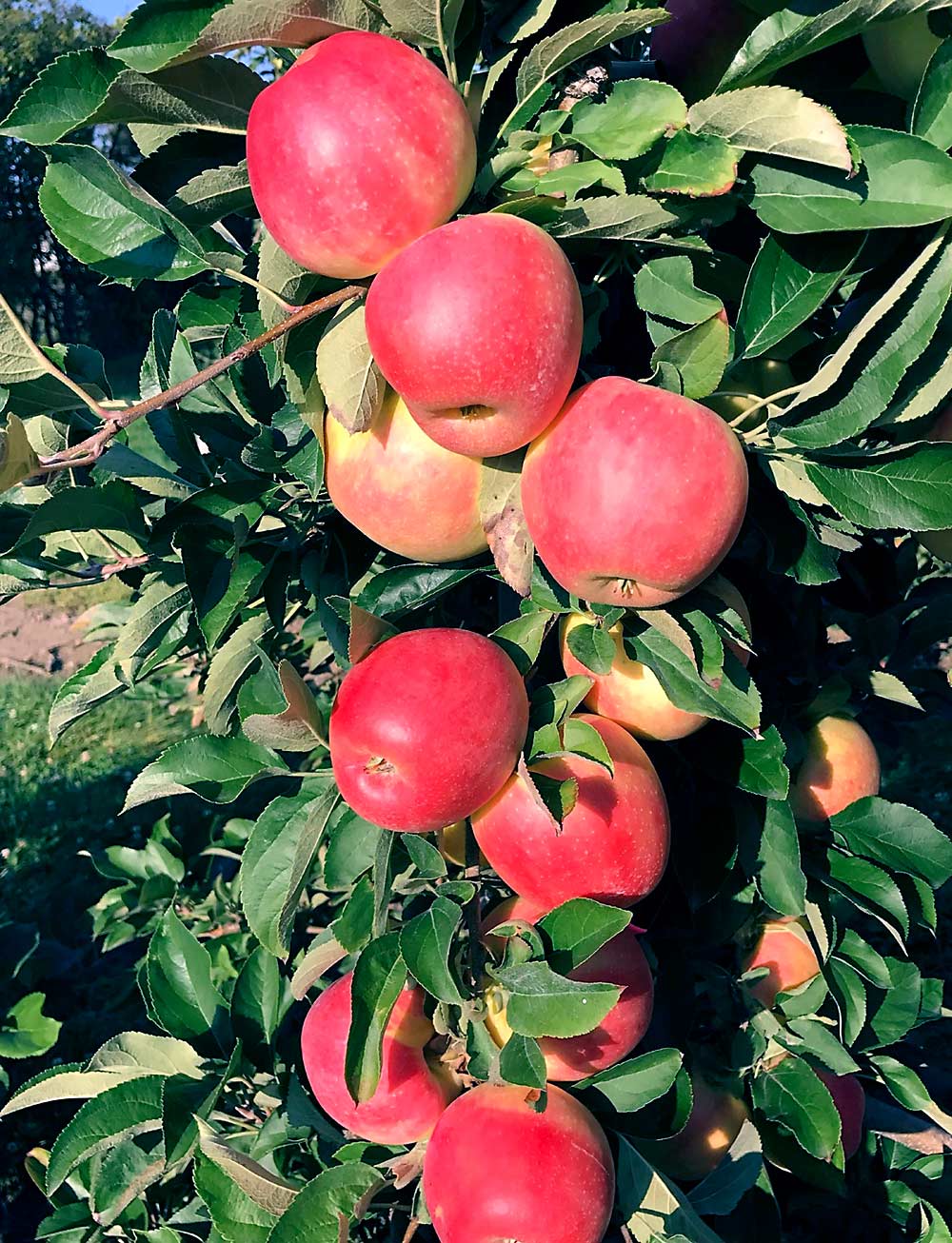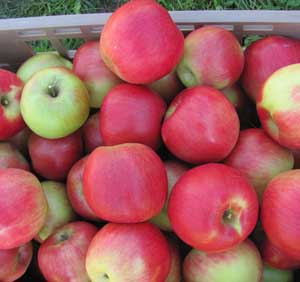
Cornell AgriTech’s apple breeding program released three new varieties last September: NY 56 (trade name Cordera), NY 73 (Pink Luster) and NY 109 (Firecracker).
Cornell University professor and apple breeder Susan Brown said that unlike the program’s previous releases — NY 1 (SnapDragon) and NY 2 (RubyFrost) — which were restricted to New York, the three new varieties are available to all U.S. growers. The new apples are also aimed at different markets than those of their managed counterparts. Pink Luster, for example, is a perfect apple for retail stands; Firecracker makes a great ingredient for baking and hard cider; and Cordera’s scab resistance makes it ideal for farm market, organic and other low-spray situations.
Brown said the new varieties have been in development an average of 20 years, with testing done at Cornell research stations and in grower orchards.
Cornell horticulture professor Greg Peck planted a few rows of Firecracker at Cornell’s Ithaca research orchard in 2011. He said the variety is an annual bearer that is well-matched for tall spindle systems. The fruit has a snappy texture and stores well. Hard cider producers like to use Firecracker to add acidity and aromatics to their products.

“It’s a great multipurpose apple,” he said.
The research orchard only has a few trees of Cordera and Pink Luster in production but recently planted a research block with both new varieties, Peck said.
Mike Basedow, a Cornell Cooperative Extension tree fruit specialist in New York’s Champlain Valley, has been observing small test blocks of Pink Luster and Firecracker. Based on what he’s seen so far, Firecracker needs to be thinned aggressively to get good fruit size, and Pink Luster appears to be low vigor, similar to Honeycrisp.
“These varieties will be really nice offerings for the retail markets, which works well with the open release,” Basedow said. “Hopefully, that helps build some momentum and name recognition.”

Brown said Cordera, Spanish for “lamb,” was named after longtime Cornell apple breeder Robert Lamb. The apple is attractive, retains its flavor and texture and is resistant to apple scab. NY 56/Cordera’s parents are Honeycrisp and an unnamed relative of Liberty, both of which possess scab resistance. Its fruit quality is superior to most commercially available scab-resistant varieties, without the high acidity, astringency and thick skin common to resistant apples. Average harvest is early to mid-October. Scion vigor is low and needs to be matched with a higher-vigor rootstock such as Geneva 935, she said.
NY 73/Pink Luster has unusually bright pink-red skin, crisp texture and juiciness. The variety matures in mid-September, which makes it a good match for on-farm and U-pick sales. Its parents are Honeycrisp and Imperial Gala. Fruits are sun-sensitive, so blush coverage will range from 20 percent to 40 percent, Brown said.
NY 109/Firecracker’s parents are Golden Glory (a relative of Golden Delicious) and an unnamed breeding selection that’s also a parent of SnapDragon. It has a partial russet skin and “rustic” appearance, as well as a unique combination of acidity and sweetness that produces complex flavors, making it a good candidate for fresh eating, baking and hard cider production. The apple’s rough appearance would not be acceptable in wholesale markets, but in tests it developed a “huge fanbase,” especially among cideries and people who like heirloom-type apples. Average harvest date is mid-October, Brown said.
To learn more about obtaining licenses for the new varieties, call Jessica Stein at Cornell Technology and Licensing at 607-255-0270, or email jessica.stein@cornell.edu.
—by Matt Milkovich







Leave A Comment